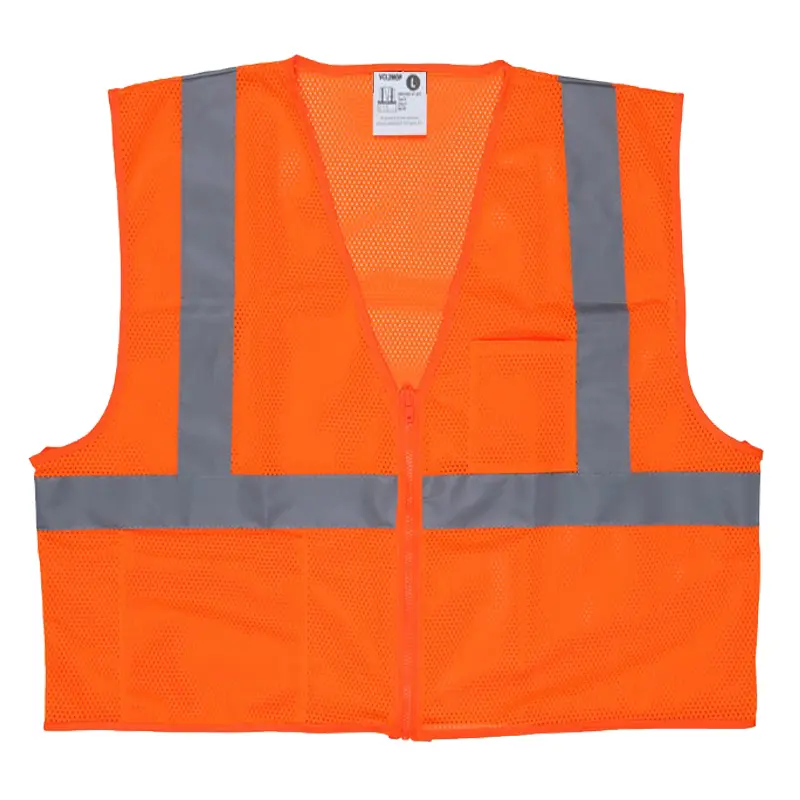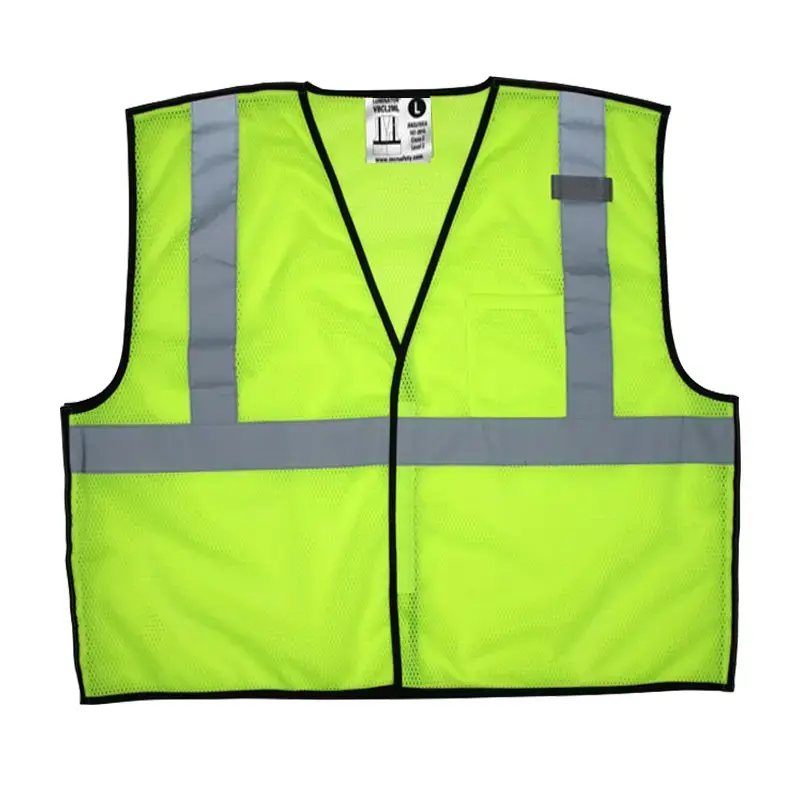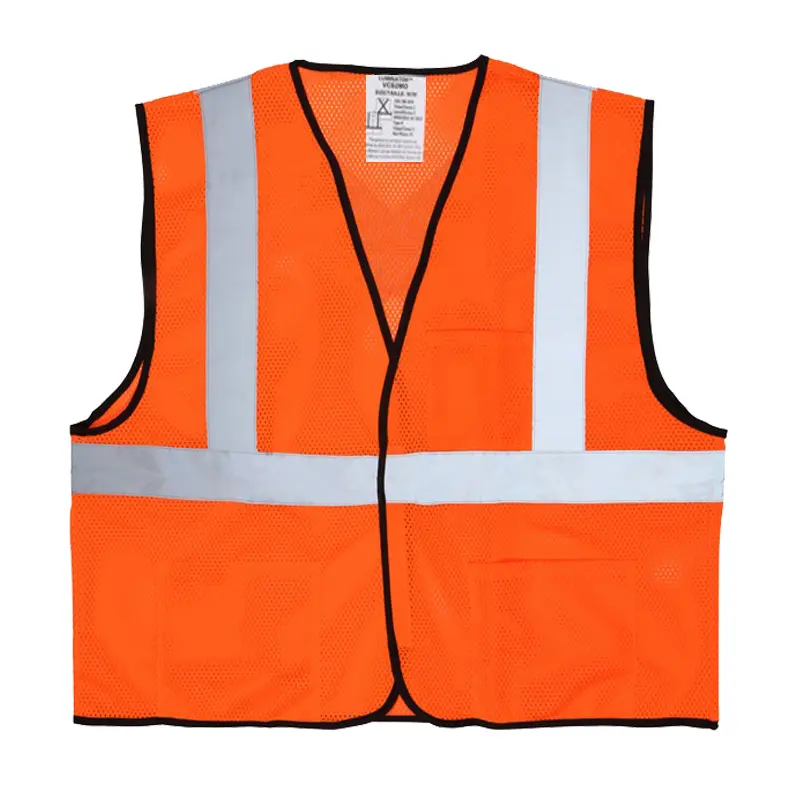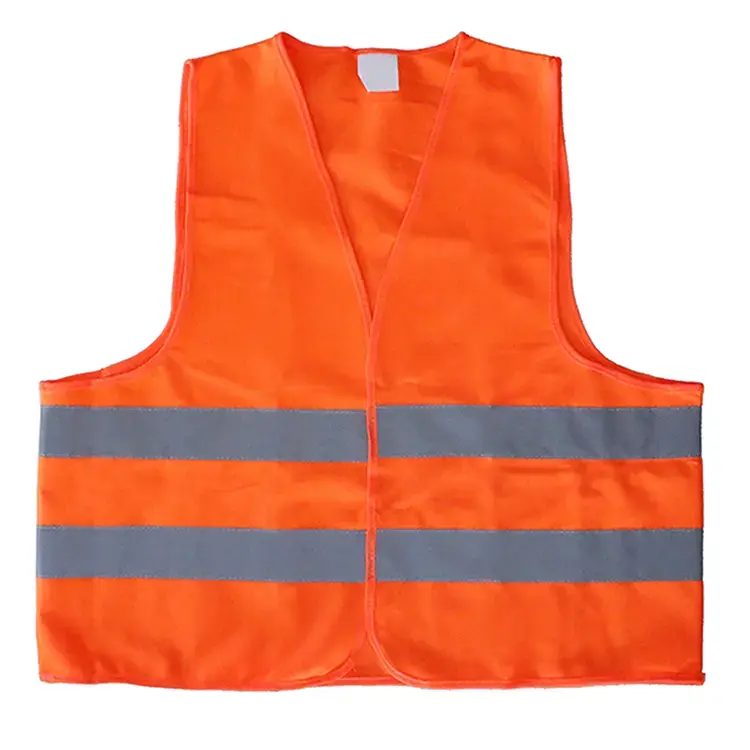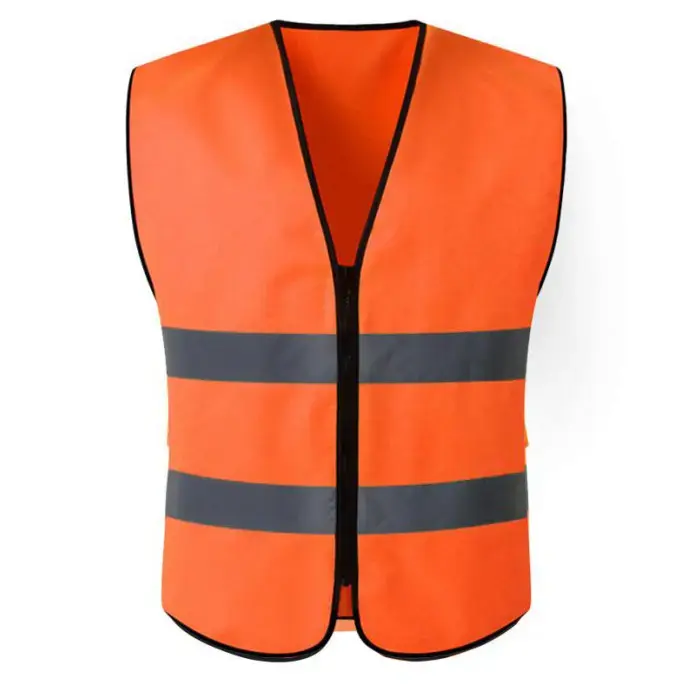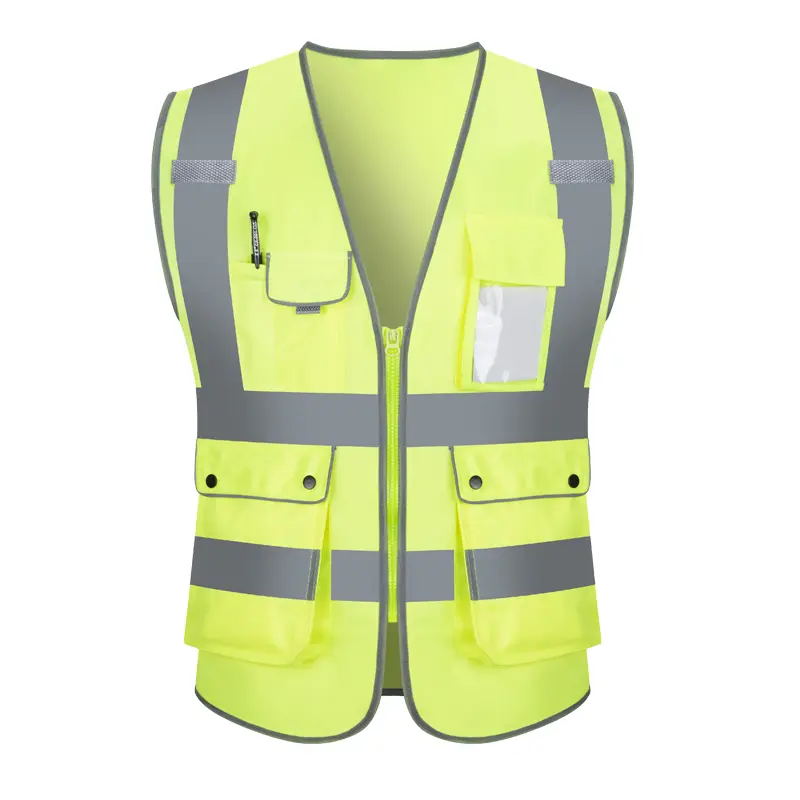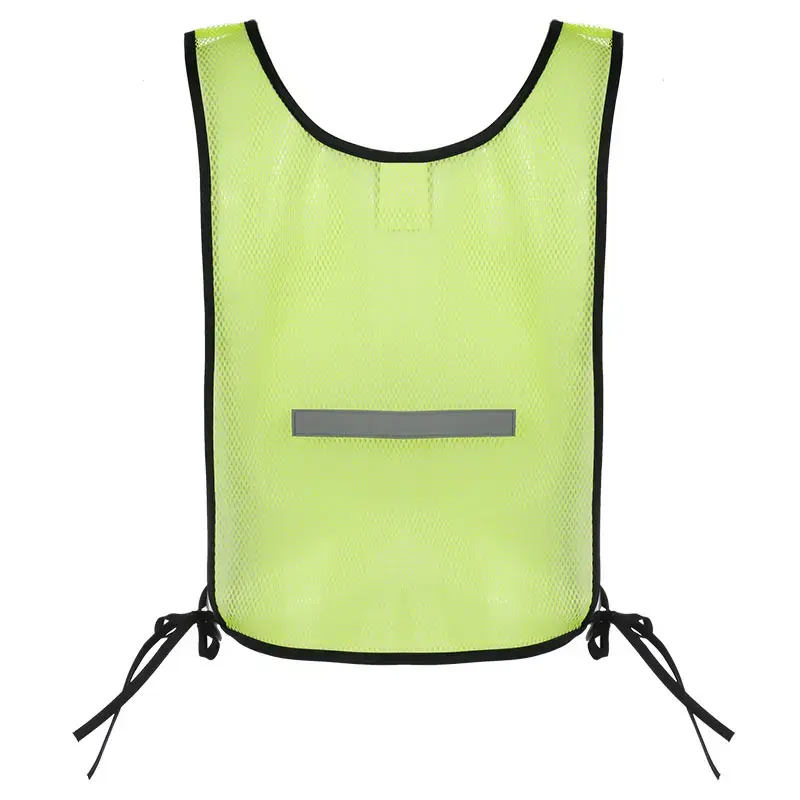How to ensure that reflective safety vests meet the size requirements of different countries
How to ensure that Reflective Safety Vests meet the size requirements of different countries
Introduction
In the global market, reflective safety vests, as an important part of personal protective equipment, have a wide range of international market demand. For companies engaged in the export and wholesale business of reflective safety vests, it is crucial to understand and ensure that the products meet the size requirements of different countries. This is not only related to customer satisfaction and product applicability, but also the key to entering and expanding the international market and establishing a brand image. This article will explore in depth how to ensure that reflective safety vests meet the size requirements of different countries and provide suggestions and solutions for related companies.
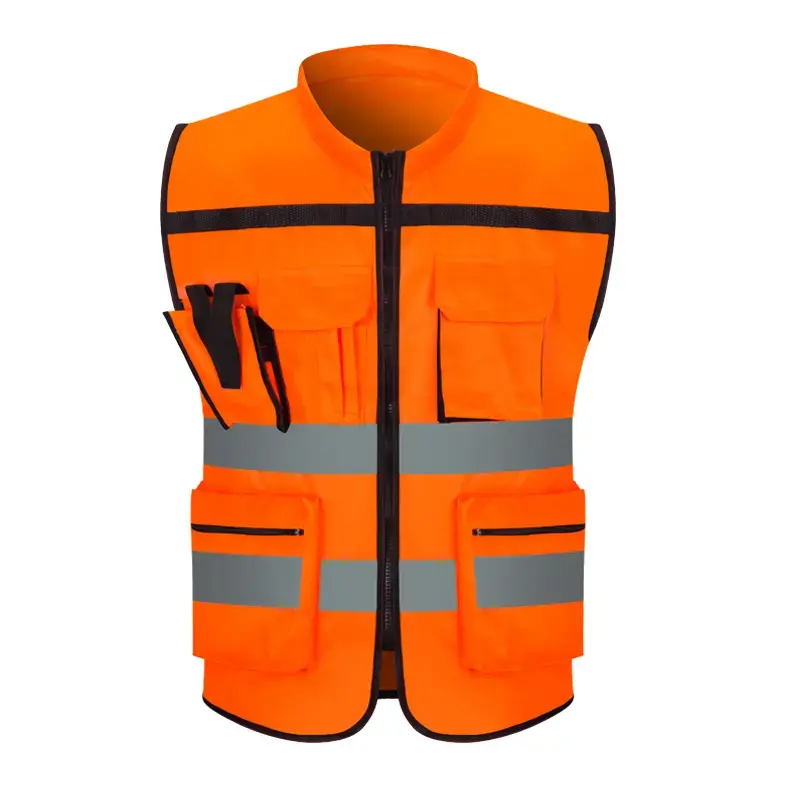
1. Overview of reflective safety vest size standards in different countries and regions
Europe (EU)
EN 471 standard: This is a widely used high-visibility warning clothing standard in Europe. Although this standard mainly focuses on the requirements of the performance, area, and location of reflective materials, it also indirectly affects the size design of clothing. For example, in order to ensure the reasonable distribution and effective display of reflective materials on clothing, the size design of clothing must meet certain fit and wearability requirements so that the reflective material can fit the body parts correctly and play a good reflective warning role at different angles and postures.
Specific requirements of each country: Different countries in Europe may have differences in details. For example, in the UK, in addition to following the EN 471 standard, there may be special regulations on the size of Reflective Vests in specific industries or application scenarios. Reflective vests in fields such as construction sites and traffic control will have certain adaptability requirements for chest circumference, length, sleeve length and other sizes according to the actual working environment and ergonomic principles to ensure the flexibility and safety of workers during the operation.
USA
ANSI/ISEA 107 standard: This US standard makes detailed provisions on the reflective materials, colors, visibility levels and other aspects of reflective safety vests. In terms of size, although there is no clear and unified size classification like the European standard, there are corresponding considerations for the overall design and wearability of clothing. For example, in order to meet the safety needs in different working environments, the standard puts forward requirements for the coverage area of reflective vests and the visibility of reflective materials. This requires companies to fully consider the diversity of human body shapes when designing sizes to ensure that reflective vests can adapt to the body contours of most users, thereby ensuring visibility and safety in various complex environments.
Internal corporate standards and industry practices: Some large companies or specific industries in the United States may also formulate their own internal standards or follow industry practices to regulate the size of reflective vests. For example, companies in the petroleum and chemical industries may require reflective vests to have stricter size adaptability due to the special and high-risk nature of their working environment to ensure that when employees operate equipment, conduct emergency rescue and other work, the reflective vests will not affect the action or protection effect due to size issues.
Australia and New Zealand
AS/NZS 4602 standard: This standard specifies the requirements for high-visibility clothing in Australia and New Zealand. In terms of size, it emphasizes that clothing should be suitable for people of all body types and will not restrict the user's activities after wearing it. At the same time, in order to ensure the effective display of reflective materials in different parts, there are corresponding requirements for the structural design and size ratio of clothing, such as the position, width and relative relationship of the reflective tape to the body part, which are closely related to the size design of clothing. In addition, due to the diversity of local population body characteristics and working methods, when exporting reflective vests to these countries, companies need to fully consider the impact of different genders, ages, occupations and other factors on size, and provide a variety of size options to meet the needs of the local market.
Asia
Japan: In addition to the basic requirements such as reflective performance that are in line with international standards for imported reflective safety vests, Japan also has its own characteristics in terms of size specifications. Japanese consumers have relatively symmetrical bodies and have high requirements for the details and sophistication of clothing. Therefore, reflective vests in the Japanese market need to provide more refined size divisions, such as more precise size control of chest circumference, waist circumference, cuffs and other parts, in order to meet the wearing habits and aesthetic requirements of Japanese consumers. At the same time, considering the working environment and cultural characteristics of Japan, such as in some electronic factories, precision machinery manufacturing and other fields, the size design of reflective vests must also take into account the compatibility with other protective equipment such as anti-static and dustproof.
South Korea: Similar to Japan, the Korean market also has high requirements for the size of reflective vests. Young people in South Korea are one of the main consumer groups of reflective vests, and they pay more attention to fashion and comfort. Therefore, when designing the size of reflective vests, companies should not only consider functionality, but also pay attention to style and version. For example, when designing sports reflective vests, it is necessary to optimize the size of the shoulders, back, waist and other parts according to the body characteristics and exercise habits of young Korean people, so that the reflective vests can maintain good reflective effects during exercise and provide a comfortable wearing experience.
Southeast Asian countries: The body standards of countries in Southeast Asia vary greatly. For example, in countries such as Thailand and Vietnam, the locals are relatively small in size, so the size demand for reflective vests also tends to be smaller. In countries such as the Philippines, the body shape in some areas is relatively plump, and there is a certain demand for large-sized reflective vests. In addition, the climate in Southeast Asia is hot and humid, and people have high requirements for the breathability and looseness of clothing, which will also affect the size design of reflective vests. It is usually necessary to appropriately increase the looseness of clothing and improve the comfort of wearing while ensuring the reflective performance.
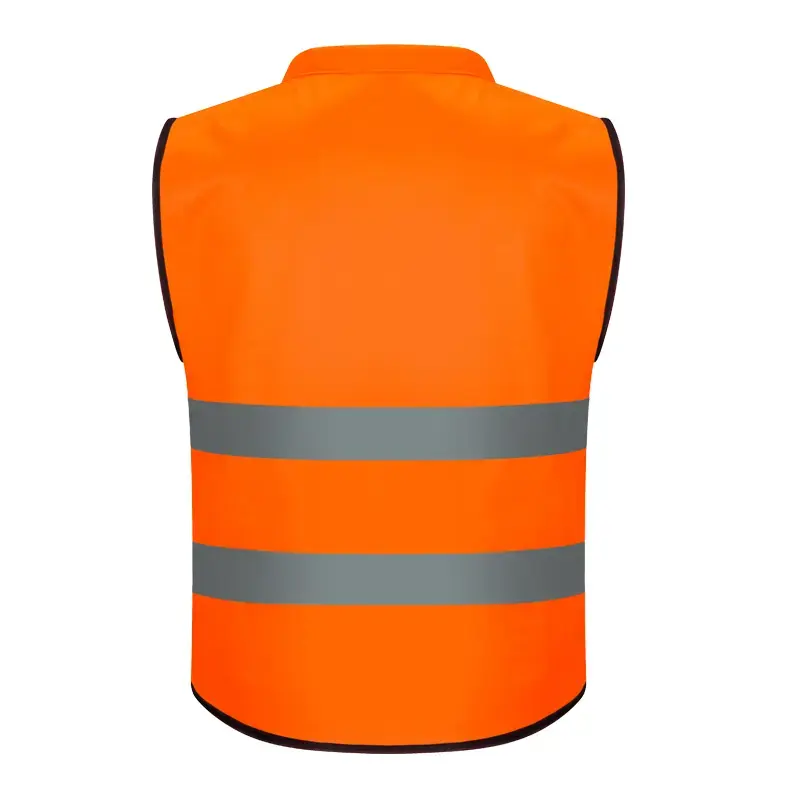
2. Methods to ensure that reflective safety vests meet the size requirements of different countries
Sufficient market research
Analyze the target market demand: Before entering a new country market, companies should deeply analyze the country's market size, consumer group characteristics, industry application fields and other factors. Through data reports from market research institutions, information from industry associations, feedback from local dealers, and participation in international exhibitions, collect local information on size preferences, special requirements, and mainstream size ranges for reflective safety vests. For example, for the European construction industry market, understand the average body shape data of construction workers in different countries, the impact of the working environment on human activities, and the industry's general requirements for reflective vest sizes, providing a basis for the company's product size design.
Research competitor products: Research the reflective safety vests of competitors that have been sold in the target country market, and analyze their size specifications, design features, and market feedback. You can purchase competitors' products for physical measurement and evaluation to understand whether their sizes meet local standards and consumer needs, as well as the advantages and disadvantages of the products in actual use. At the same time, pay attention to the reputation and customer evaluation of competitors' products in the market, especially the evaluation of size, such as whether it fits well and whether it is comfortable, etc., to find opportunities for differentiated competition and provide reference and reference for the size design of your own products.
Establish a complete size standard system
Reference international standards and certification requirements: Based on internationally recognized standards, such as EN 471, ANSI/ISEA 107, etc., combined with the company's own production capacity and technical characteristics, formulate an internal size standard system. Incorporate these standards into the design, production, quality inspection and other aspects of the product to ensure that the product can meet the size specifications of different countries and regions while meeting the basic international requirements. For example, in the design stage, strictly follow the standard requirements for the correlation between the position of reflective materials and clothing size; in the production process, establish a size inspection process, and conduct size sampling on each batch of products to ensure the accuracy and stability of product size.
Develop country-specific size guidelines: Develop detailed product size guidelines for the special size requirements of different countries and regions. These guidelines should include the size range, recommended size, size tolerance and correspondence with human body measurement data corresponding to each country and region. When the production order is placed, the corresponding size guide is selected according to the target country and region for production and quality control to ensure that the product can accurately meet the needs of the local market. For example, for reflective vests exported to Japan, the size guide should clearly specify the specific data such as chest circumference, waist circumference, and length of each size, and indicate that these data are based on the measurement of the Japanese body shape to ensure that the product has good adaptability in the Japanese market.
Optimize product design and production process
Adopt flexible pattern design: In the product design stage, adopt flexible pattern design so that it can quickly adapt to the size requirements of different countries and regions. For example, design adjustable belts, cuffs, collars and other parts so that consumers can make appropriate adjustments according to their body shape and wearing needs, thereby improving the versatility and wearability of the product. At the same time, a modular design concept is adopted to separate the main part of the reflective vest from the reflective material part. On the premise of ensuring that the reflective performance is not affected, the size of the main body of the clothing can be flexibly adjusted according to the size requirements of different countries, and then combined with the corresponding reflective material to achieve rapid customized production of the product.
Introduce advanced production technology and equipment: Invest in the introduction of advanced clothing production equipment and technology, such as automated cutting machines, high-precision sewing machines, and three-dimensional anthropometry, to improve the production accuracy and efficiency of products. Automated cutting machines can accurately cut according to pre-programmed size data, reduce the error of manual cutting, and ensure that the size of each reflective vest meets the standard requirements; high-precision sewing machines can ensure that the stitches are uniform and firm during the sewing process, avoiding size deviations caused by sewing problems; three-dimensional anthropometry can quickly and accurately obtain anthropometry data, providing a scientific basis for product size design and optimization. Through the application of these advanced technical equipment, enterprises can better control product quality and dimensional accuracy, and meet the strict requirements of different countries' markets for reflective vest sizes.
Strict quality control and inspection
Establish a sound quality inspection system: Establish a full-process quality control system from raw material procurement to finished product delivery, and take size inspection as one of the important links of quality control. Formulate detailed size inspection standards and operating procedures, and clarify the inspection items, methods, frequency, and qualified judgment criteria. In the raw material procurement process, the fabrics and reflective materials used to make reflective vests are tested for dimensional stability to ensure that the dimensional change rate of the raw materials is within the allowable range after washing, drying, stretching and other treatments; in the production process, multiple dimensional inspection processes are set up, such as the size inspection of the sheet material after cutting, the size inspection of the semi-finished product after sewing, and the size inspection of the finished product, etc., to promptly discover and correct the dimensional deviation problems in the production process and prevent unqualified products from entering the market.
Implement third-party testing and certification: In order to improve the credibility and competitiveness of products in the international market, companies can seek professional third-party testing agencies to conduct product size testing and certification. Select international testing and certification agencies with good reputation and qualifications, such as SGS, TUV, etc., to test the size of reflective vests according to the requirements of the target countries and regions, and obtain the corresponding certification certificates. These third-party testing and certification agencies usually have professional testing equipment and experienced technicians, and can provide objective, fair and accurate test results. The certification certificates they issue have a high degree of recognition in the international market, which helps to eliminate customers' doubts about product quality and size and promote the export sales of products.
3. Actual Case Analysis
Case 1: A certain enterprise and the EU market
Background: A certain enterprise is an enterprise mainly engaged in the production and export of reflective safety vests, and its products have a certain market share in the EU market. However, with the increasingly stringent requirements of the EU market on product quality and size, the enterprise faces the challenge of ensuring that its products comply with the EN 471 standard and the special size requirements of each member state.
Measures: In order to solve this problem, the enterprise first organized a professional team to conduct in-depth research on the size standards and market demands of EU countries, and collected a large amount of anthropometric data and customer feedback information. On this basis, the enterprise cooperated with European scientific research institutions to jointly develop a set of reflective vest design and production solutions that meet the EN 471 standard and adapt to the size requirements of EU countries. In terms of product design, the adjustable shoulder strap and waist belt design is adopted, so that consumers can flexibly adjust the size of the vest according to their body shape, which improves the wearability of the product; in the production process, advanced automated production equipment is introduced to strengthen the size control and quality inspection of the production link to ensure that each product meets the specified size range and tolerance requirements. At the same time, the company actively communicated with EU dealers and customers, adjusted product size specifications and design solutions in a timely manner based on their feedback, and continuously optimized product performance and quality.
Result: Through the implementation of the above measures, the reflective safety vests of a certain company successfully met the strict size requirements of the EU market, and its sales performance in EU countries has been significantly improved. The product not only passed the EN 471 standard certification, but also received praise and orders from customers in many EU countries, further consolidating the company's position in the EU market, establishing a good brand image, and laying a solid foundation for the company's sustainable development.
4. Challenges and coping strategies
Challenges
Frequent updates and differences in national standards: In order to adapt to technological development, market changes and increased safety needs, different countries and regions will continuously update and improve their reflective safety vest size standards and related requirements. The update of these standards may cause companies to frequently adjust the size design and production process during the production process, increasing the operating costs and management difficulties of the company. For example, the EU may revise the size-related clauses in the EN 471 standard based on new research results and market feedback, and improve the requirements for the size accuracy and fit of reflective vests. This requires companies to pay close attention to the update of standards and make corresponding adjustments in a timely manner, otherwise they will face the risk of products not meeting the standards and being unable to enter the market or being recalled.
Complexity of body shape differences in the global market: The body shape of people in different regions of the world varies greatly, and with the acceleration of globalization and the increase in population mobility, the distribution of body shape in national markets is also changing. This makes companies face greater complexity and uncertainty when determining product size specifications. For example, with the increase in immigration, the demand for large-size reflective vests in the markets of some European countries may gradually increase, and the company's original size design based on local traditional body data may not be able to meet this part of the new demand, and market research and size planning need to be re-conducted, which increases the company's market research costs and product design difficulties.
Satisfaction of niche markets and special needs: In addition to the needs of the mainstream market and general consumers, there are also some niche markets and special needs, such as professional operators in specific industries, disabled people, children, etc., who have special customized requirements for the size of reflective safety vests. The order volume of these niche markets and special needs is relatively small, but the accuracy and personalization requirements of the size are high. When meeting these needs, companies may face problems such as high production costs and low efficiency of customized production, which will affect the company's economic benefits and market competitiveness.
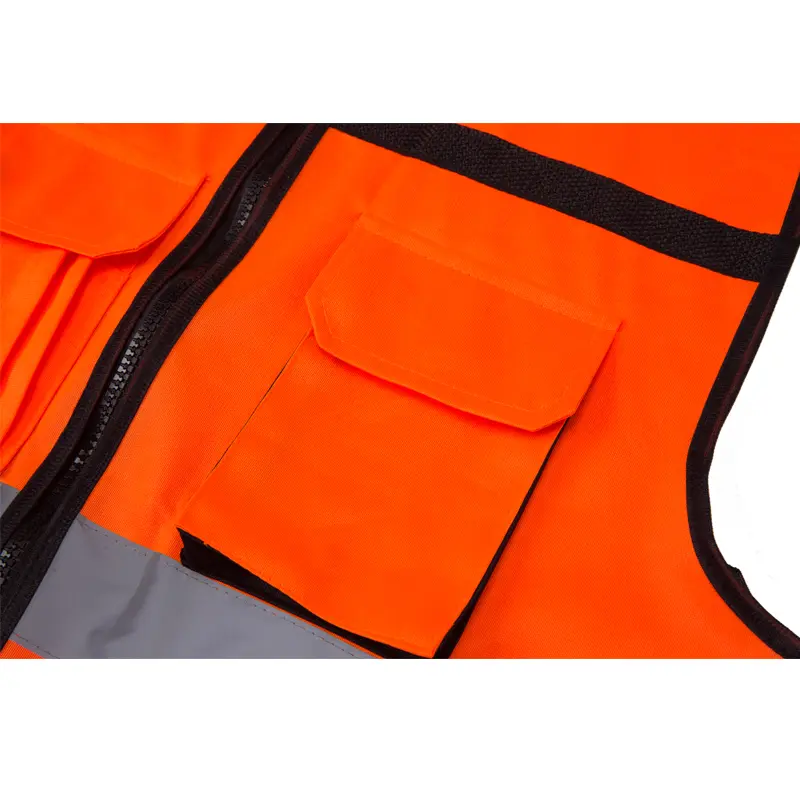
Countermeasures
Establish a production model that combines standardization and customization: Companies can establish customized production processes and systems on the basis of maintaining standardized production to meet the size requirements of different countries, different markets and special customer groups. For the mainstream market and conventional size requirements, standardized production can be used to improve production efficiency, reduce production costs, and ensure consistency in product quality; for niche markets and special size requirements, advanced digital technology and production equipment, such as 3D printing and intelligent cutting, can be used to achieve rapid customized production and provide customers with personalized size solutions. For example, companies can develop an online customization platform that allows customers to input size data, select reflective material colors and styles according to their needs, and then quickly produce and deliver through the company's intelligent production system, which not only meets the special needs of customers, but also improves the company's market response speed and customer satisfaction.
Strengthen cooperation with industry associations and standardization organizations: Actively participate in the activities of international and domestic industry associations and standardization organizations, keep abreast of the updates and changes in the size standards of reflective safety vests in various countries, participate in the formulation and revision of standards, contribute corporate wisdom and strength to the development of the industry, and also strive for more voice and initiative for the development of enterprises in the international market. Through cooperation with industry associations and standardization organizations, companies can obtain information on standard changes in advance, make preparations for production adjustments and technical research and development in advance, and reduce the risks caused by standard updates. In addition, enterprises can also use the platforms of industry associations and standardization organizations to conduct technical exchanges and cooperation with other enterprises, scientific research institutions, etc., to jointly overcome technical difficulties in size control and production accuracy, and improve the technical level and product quality of the entire industry.
Continuous technological innovation and R&D investment: Continuously increase investment in technology research and development, explore new materials, processes and production technologies to improve the dimensional stability and wearability of reflective safety vests. For example, develop reflective materials and fabrics with higher dimensional stability so that they can still maintain their original size and reflective performance after multiple washing, friction, stretching and other treatments; develop intelligent production monitoring systems to monitor the dimensional data in the production process in real time, automatically adjust the parameters of production equipment, and ensure accurate control of product size; study the deep integration of ergonomics and reflective safety vest design, and optimize product design by simulating the human body's demand for clothing size under different body shapes and postures, and improve the comfort and functionality of products. Through continuous technological innovation and R&D investment, enterprises can continuously improve their core competitiveness, better respond to the challenges of global market size requirements, meet the needs of different customers, and promote the sustainable development of the reflective safety vest industry.

